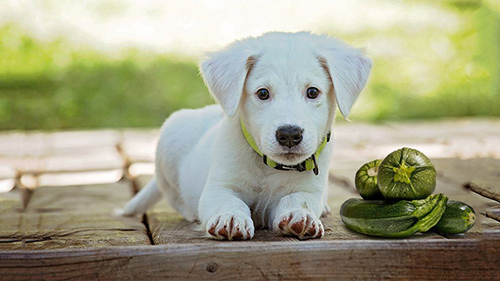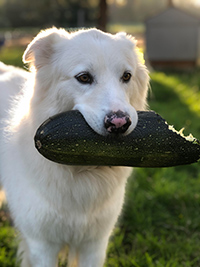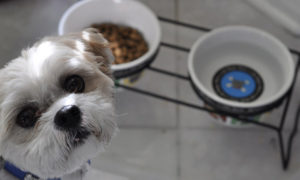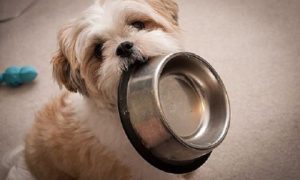
Can dogs eat zucchini? The answer is yes! Zucchini is loaded with nutrients; therefore, when incorporated with a balanced diet, it makes a low-calorie, healthy treat for your puppy. According to Dr. Alex Crow, a veterinary surgeon, there are plenty of ways to include zucchini into your canine companion’s diet.
Can Dogs Eat Zucchini?: Health Benefits
Is zucchini okay for dogs? Zucchini is an excellent food for canines. However, as with all foods such as squash, broccoli, cauliflower, asparagus, spinach, bread, and cucumbers, zucchini must be given to your dog in moderation. Here are some of the benefits of incorporating this nutritious food into your dog’s diet:

- Zucchini is a food that is rich in vitamins B6, A, K, and C, which are all extremely important for your pups vision, coat, bones, metabolism, skin, cartilage growth, and proper clotting of blood.
- The skin is high in essential antioxidants.
- It is loaded with insoluble and soluble fiber essential for the overall health of the dog’s digestive system and the maintenance of healthy blood sugar levels.
- Zucchini for dogs is essential because of its low-calorie and high fiber content which makes a fantastic treat for dogs with immense appetites or those needing to lose weight. It helps to keep them fuller for a longer time.
Are There Risks Associated With Feeding My Dog Zucchini?
Though zucchini can be a healthy and delicious treat added to your dog’s usual meal, Dr. Crow has some recommendations before you start feeding it to your dog.
- Make sure to taste it first. Do not give zucchini to your dog if you get a bitter taste because it could potentially contain toxic chemicals primarily found in the plant’s stems and leaves. Bitter-tasting zucchini is not harmful to humans but can be problematic for your canine friend. The bitter zucchini tend to be the larger ones, so if you’re not sure, get the smaller ones when you’re out shopping for your dog.
- Keep an eye out for adverse reactions, such as cramps, vomiting, or diarrhea. Contact your vet immediately if your pup experiences any of these.
- A question I get a lot is can dogs have raw zucchini? I would not advise it because it can be problematic for digestion. However, it does not pose an immediate danger, but it can be a little rough on your canine companion’s sensitive stomach. The best way to serve it to your dog is to boil, steam, or ferment it. Soft zucchini is more digestible.

The Best Way to Feed Zucchini to Your Dog
Before feeding your dog any human food, please consult your vet first. A vet can determine the correct portion size your dog should get. Although it is a healthy treat, it still needs to be worked into your pup’s overall balanced daily diet.
Wash the zucchini properly, discard the stem, and chop it into bite-sized slices. Remember, the smaller the dog, the smaller the pieces should be to avoid choking.
Cook them down, chop them, mash them up into a puree, and add them to your dog’s primary food.
You can also cook them then place them into a blender with other canine-friendly ingredients of your choice to make a healthy, refreshing, and tasty smoothie.
Do not add onions or garlic to any zucchini concoction. Onions and garlic pose a toxic threat to dogs.
The best serving size is 1-inch thick slice that’s chopped into tiny slices for smaller dogs and two to three chopped pieces for much larger dogs.
Commonly Asked Questions
- Can dogs have raw zucchini?
– Absolutely. In fact, most dogs like the crunch sensation when eating it. Remember to cut them up into smaller pieces to avoid choking hazards. - Are dogs okay to eat cooked zucchini?
– The answer is absolutely. Many dogs prefer it cooked because it’s softer and easier for them to digest. Do not season the zucchini with any salt or any other flavoring that you may use for regular cooking. Cooking them plain is the best and most healthful way for your dog. - How much zucchini can I give my dog?
– It totally depends on the health and size of the dog; however, vegetables should not account for more than ten percent of your dog’s overall consumption. Begin by implementing small amounts and see how your pup reacts; if you do not witness digestive problems such as upset stomach or abnormal hard and soft stools, you can give them more.




